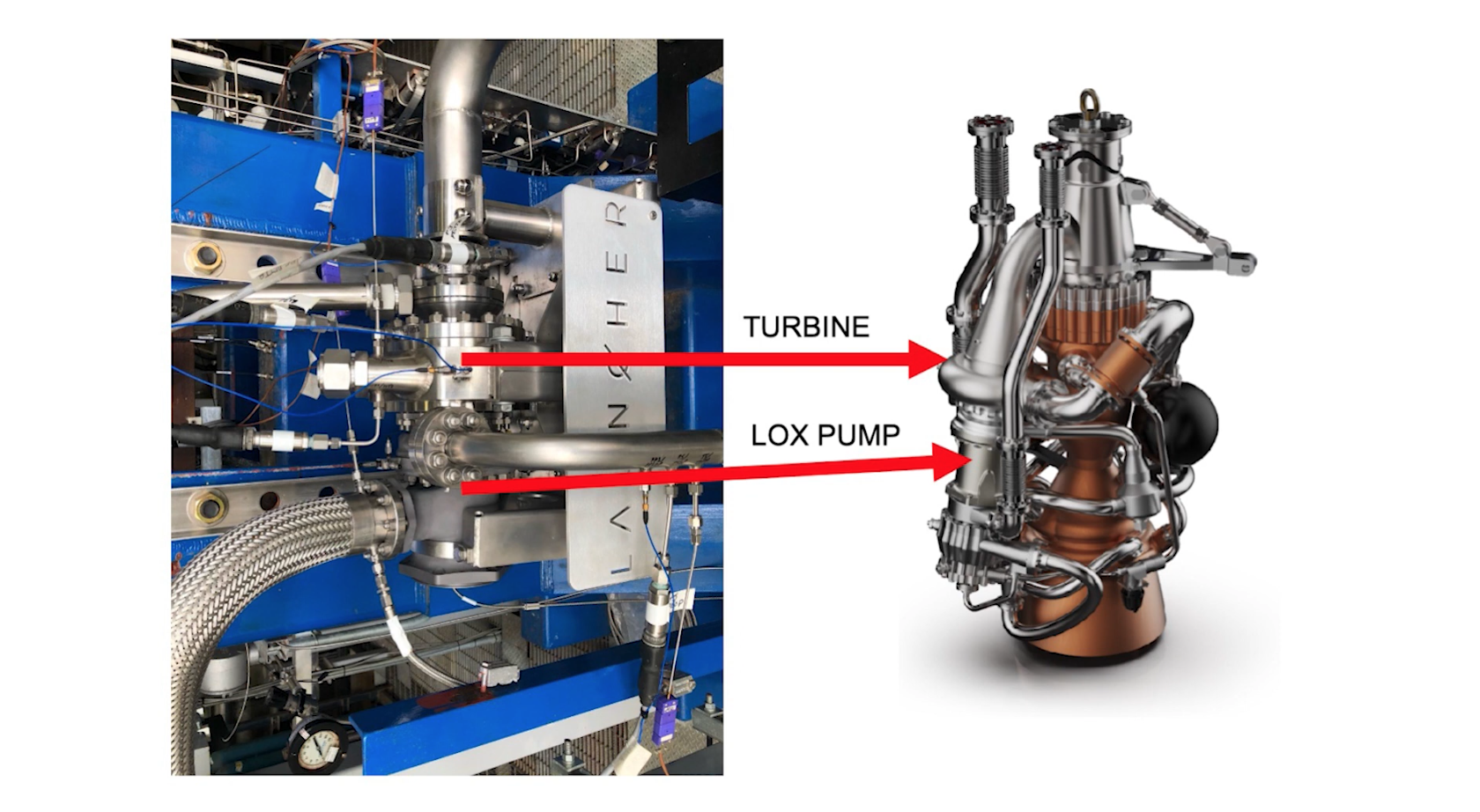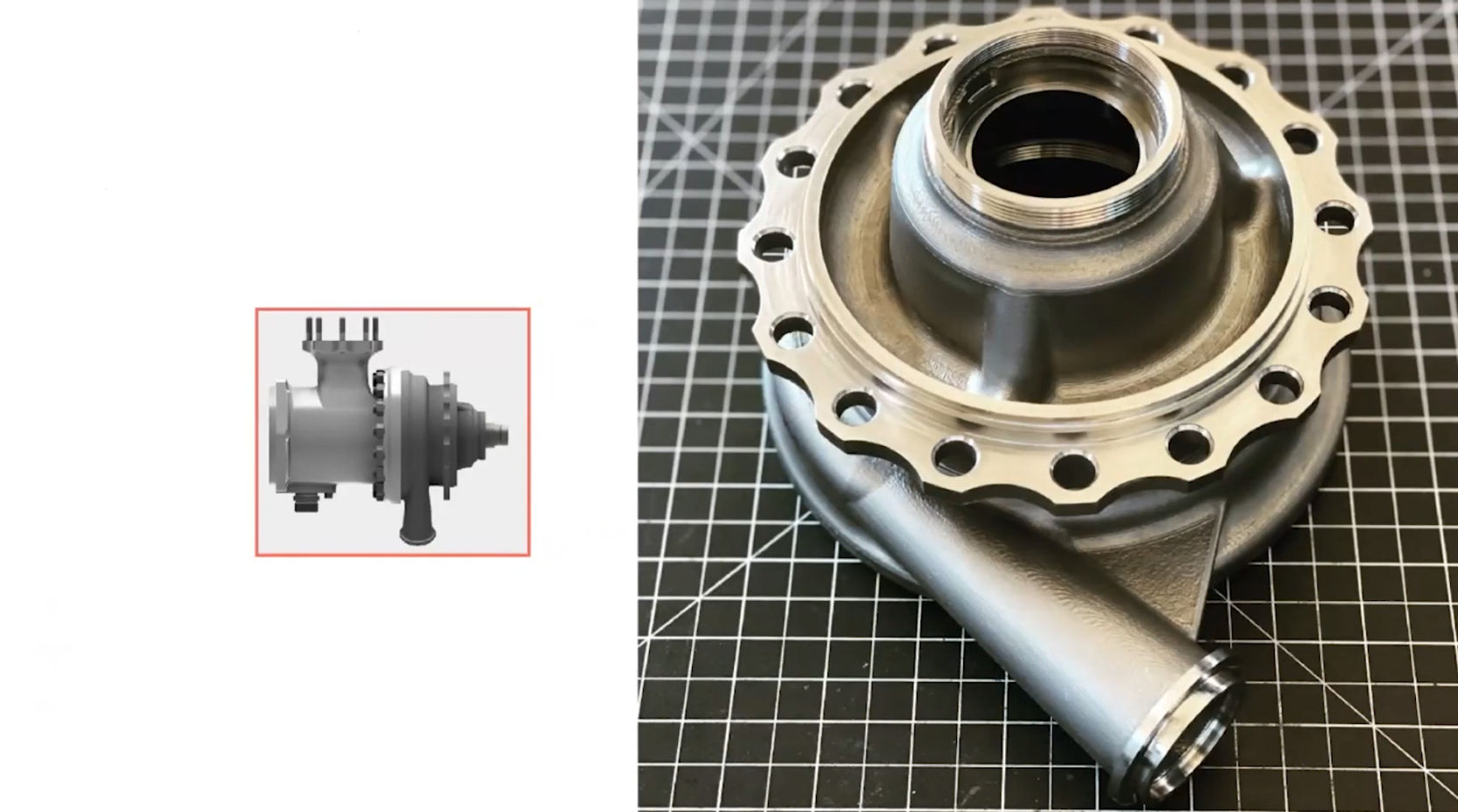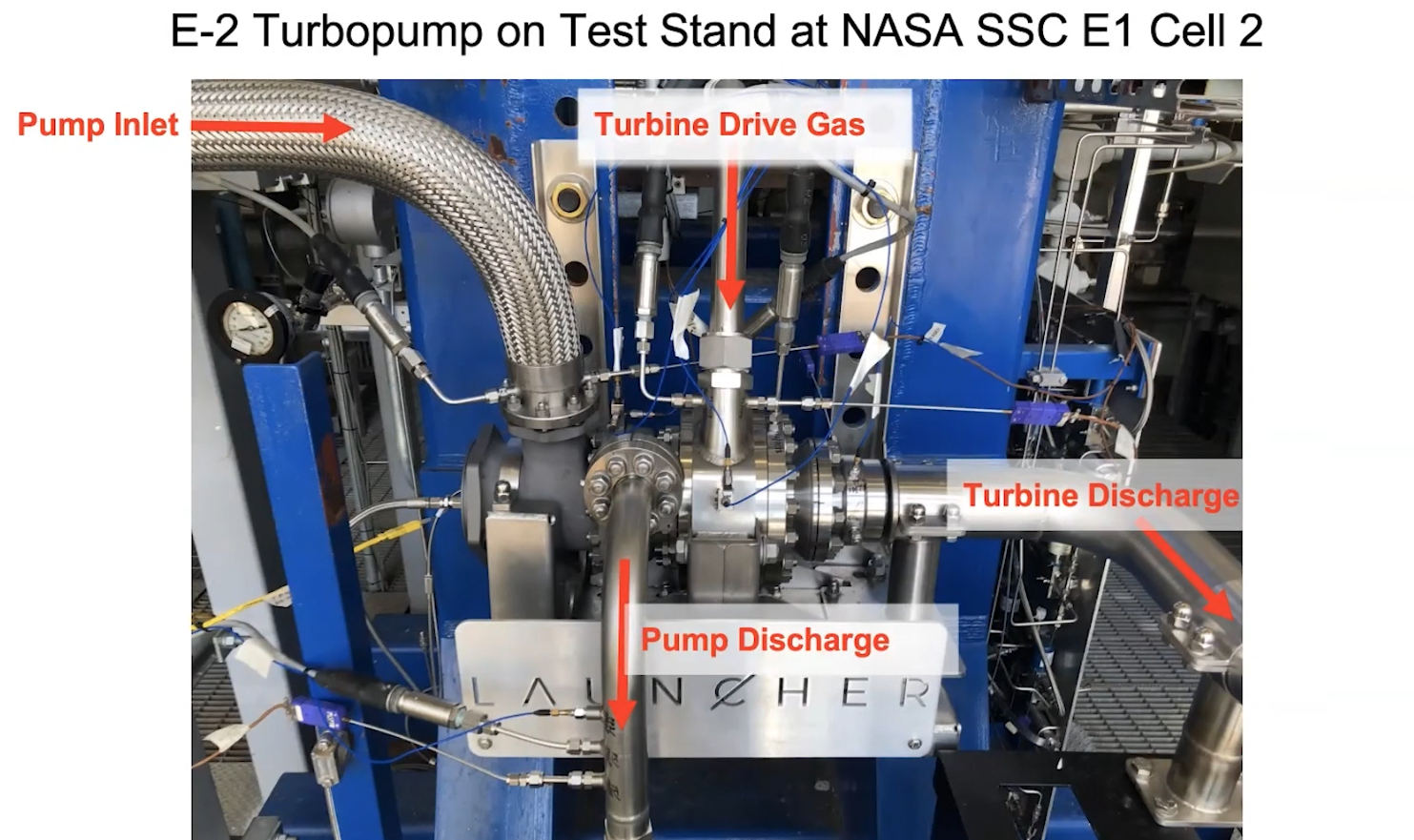As one of the fastest rising 3D printing solution providers for the space industry, VELO3D has helped many startups adopt additive manufacturing (AM) technology to strengthen their design and manufacturing operations. One of those companies is Launcher, a developer of high-performance rockets designed to deliver small, remote-controlled satellites to orbit. The key to Launcher’s strategy is its E-2 engine – currently in active development – which is expected to be optimized for mass production and low cost.
Considered by the company as the “world’s highest-performing engine for small launchers,” it has two key components: a combustion chamber and a turbopump. Launcher has already 3D printed the combustion chamber in one single part. Now, its Founder and CEO, Max Haot, has announced the development of a 3D printed liquid oxygen (LOX) turbopump created with specialized turbomachinery engineering software from Ansys and Velo3D’s metal AM solutions.
On May 19, 2021, Haot teamed up with Launcher Lead Engineer Andre Ivanovic, Ansys Turbomachinery Lead Sunil Patil, and VELO3D Senior Applications Engineer Gene Miller to discuss the creation of efficient spacecraft parts by combining optimized design and modern manufacturing. During the hour-long panel discussion, the experts revealed how they designed, and 3D printed Launcher’s LOX pump for its E-2 engine and some of the latest successful testing results.
For small launch vehicles, boosting performance often lays with the turbomachinery pumps that inject propellants into the combustion chamber. At the heart of those turbopumps there is an impeller that delivers the required propellant flow and pressure to the thrust chamber, and its design is critical for the performance of the pumps. This was considered a big challenge to the team.
For the task, Launcher originally licensed an orbit-proven pump design from the Ukrainian liquid-propellant rocket engine RD-8, which was used as a second stage thruster of the Zenit launch vehicle, performing 72 successful orbital flights. The heritage pump was then re-designed, manufactured, and tested with the help of Ansys and VELO3D, leading to greater part complexity, lower costs, and faster lead times.
After a full flow path design analysis with Ansys’s specialized CFX software for turbomachinery applications, the group worked on simulating the performance of the flow path in the LOX pump to ensure that the predicted performance was in line with the desired parameters for the entire rocket engine system. Once the part was optimized and the simulations verified, the team worked with VELO3D to produce some of the components of the LOX pump, such as the pump inlet and outlet housing. Using Sapphire, a metal AM system designed for mission-critical applications, they could deliver turnkey parts without supports, enabling Launcher to demonstrate successful testing with the first parts it produced.
VELO3D’s patented SupportFree technology made the E-2 LOX pump possible. For parts like the turbopump’s inlet housing, which brings in the flow laterally and turns it 90 degrees to direct it into the pump inducer, there are highly complex internal geometries with low overhanging angles that are difficult to print using traditional powder bed fusion machines. With the Sapphire printer, engineers could make this part with minimal stick supports, which were easily removable.
Ivanovic then described the printing process for another turbopump part, the inducer/impeller, which was 3D printed flat. The engineer suggested that typically, shrouded impellers are difficult to print because the top shroud has a very low overhang, making it difficult to access any support structures. Usually, the impeller needs to be angled on the build plate as it is printed, which is not desirable because it leads to a non-uniform mass distribution away from the rotational axis.
“By printing the part flat, we got a nice symmetric mass distribution of the part relative to that central rotational axis. This is ideal for balancing after you print. Balancing is needed, because if a rotational component in turbomachinery is not balanced, then, on every rotation, there will be a large vibration that’s impulsed into your system and into your bearings,” described Ivanovic.
For Haot, the biggest challenge when Launcher received the licensed heritage design was 3D printing it. However, while the pump features a heritage design, the flow path was customized with Ansys’s simulation power. Also, the group soon realized that VELO3D’s support-less technology was enough for even a successful prototype. The CEO claims this is the first 3D printed LOX pump for a rocket engine and that their full test campaign was successful. Metal AM eliminates tooling investment and creates a workflow that allows rapid iterations and development, he said.
Once the team had the parts produced for the LOX pump, they built the actual test article and tested it at the NASA Stennis Space Center facility in Mississippi, where Launcher signed a Space Act Agreement to use the E-1 test stand at the center for engine tests.
“The assembled 3D printed LOX pump was tested in flight-ready design in terms of mass and specifications, but the turbine used during testing was machined and not flight-ready. The next step in the development of the turbine is a 3D printed Inconel housing to integrate the flow path that was tested,” said Haot. “As Launcher’s first successful turbopump test, it is very significant since they are dealing with liquid oxygen in the pump at 30,000 [revolutions per minute], about one megawatt of power from the turbine. In this type of environment of 4,000 [pounds per square inch] discharge pressure, any anomaly—any rubbing between the rotor and the stator— can result in an immediate rapid unplanned disassembly.”
Some of the key tests performed successfully with the first 3D printed LOX turbopump include a two-minute duration test at nominal RPMs with liquid nitrogen. This 30-second cavitation performance test involved lowering the pump input pressure over time and seeing how that affected the output pressure. They also performed a 33,000 RPM test for 30 seconds with liquid oxygen. With test results performing according to plan, the company is now focused on the workflow and the cost of leveraging 3D printing without tooling. The full success of the test campaign shows a significant breakthrough for its roadmap, as well as what more can be done with Ansys and VELO3D.
The latest Launcher LOX pump was created for the E-2 rocket engine, which will also power a newly designed rocket, the Launcher Light. Currently, in mid-development and expected to test fly in 2024, the Launcher Light could move into commercial service by 2026. The new rocket model will deliver less payload capacity than the startup’s originally planned small launch vehicle, the Rocket-1, which was expected to place up to 1,704 pounds (773kg) into LEO.
Instead, Launcher Light is looking at a payload capacity of 330 pounds (150kg) to low Earth orbit (LEO) and 220 pounds (100kg) to sun-synchronous orbit (SSO). One major difference is that while Rocket-1 was set to use four E-2 engines in its first stage, Launcher Light will require only one. The new design will stand at 50 feet tall, with three stages, versus the two-stage Rocket-1. Moreover, the success of the California-based company’s 3D printed LOX pump will play a critical role in this launch vehicle’s performance.
Subscribe to Our Email Newsletter
Stay up-to-date on all the latest news from the 3D printing industry and receive information and offers from third party vendors.
You May Also Like
Precision at the Microscale: UK Researchers Advance Medical Devices with BMF’s 3D Printing Tech
University of Nottingham researchers are using Boston Micro Fabrication‘s (BMF) 3D printing technology to develop medical devices that improve compatibility with human tissue. Funded by a UK grant, this project...
GaeaStar and Verve Coffee Roasters Start Pilot Production of Sustainable 3D Printed Coffee Cups
Following a 2022 debut in Germany, GaeaStar, a startup based in San Francisco and Berlin, has begun US pilot production of its sustainable, disposable clay cups and bowls made with...
Meltio and Accufacture Unveil Robotic Metal 3D Printer Made in the US
Meltio has partnered with Michigan-based robotics firm Accufacture to introduce Alchemist 1, a robotic cell designed for wire-laser metal 3D printing made in the US. This new system represents a...
WASP Highlights Advances in Healthcare 3D Printing at Italy’s Exposanità 2024
WASP takes center stage at Italy’s leading healthcare expo, Exposanità 2024, demonstrating the transformative impact of its advanced 3D printing technologies on the medical sector. Known for its line of...




































